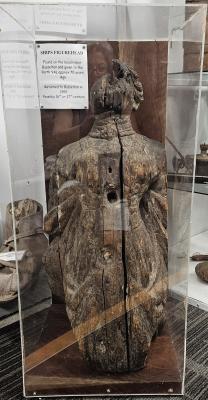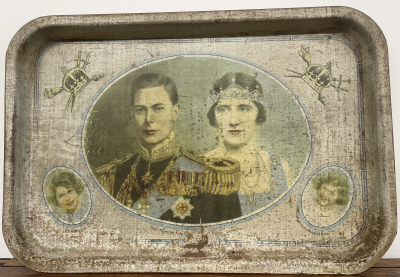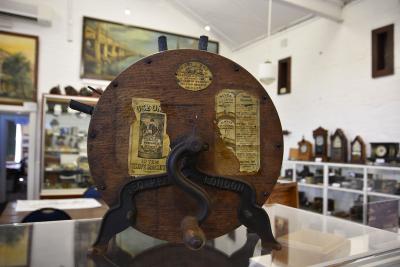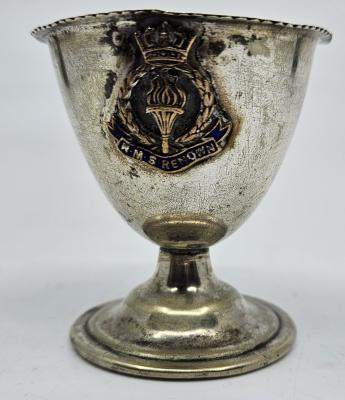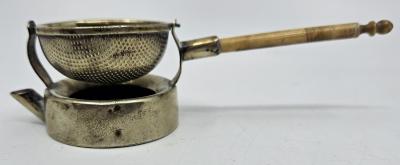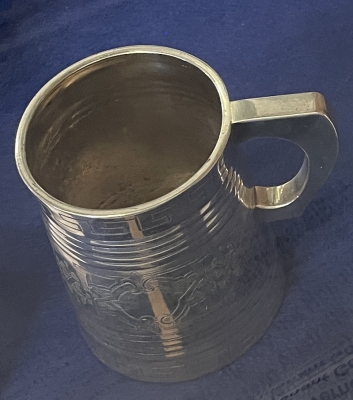The Anchor Light
c. 1870A brass and glass oil burning anchor light. The base is brass and is encircled by ventilation holes to allow oil fumes to dissipate. Above the brass base is a lensed glass cylinder which houses the wick and this cylinder is covered by a domed brass cap. Sections of the lamp can be separated to light the wick and refill the oil reservoir. The lamp has a brass handle at the top and 2 brass rings on the top and base brass sections which would have been used to fasten the lamp into position.
The Anchor Lamp has been used on sailing ships for hundreds of years and was named for its use when it was a shipping requirement to display a white light from the tallest mast whenever the ship was at anchor or underway at night.
The oil burning Anchor Lamp was lit and then hoisted to the top of the mast with one rope tied to the handle and two ropes through the brass guides to keep it from swaying as the ship rolled with the sea. The Fresnel style lens magnified the light to be visible for 20 nautical miles and the lamp could burn for up to 6 hours before having to be refilled. The lamp was made from brass or copper and burned whale oil or kerosene.
Details
Details
On the brass top is the word
ANCHOR
The soft, warm light from an oil lamp comes from a wick, normally a type of woven fabric dipped into a vessel filled with oil. The wick absorbs the oil and becomes saturated. When lit, the wick itself doesn't burn, just the oil it is infused with. This creates a constant and consistent flame that is much more easily controlled than conventional candles. Inside the ships, marine oil lamps could be suspended from the cabin top or affixed to the bulkheads on gimbaled mounts which allowed for a consistent light below decks on even the roughest of passages.
This Anchor Lamp is believed to have been used in the Busselton lighthouse, which was erected in 1870. The lighthouse was built of timber by Charles Keyser from Wonnerup, stood 21 metres high and from under the beams hung a ships bell which was rung to announce the arrival of a ship in port.
A replica of the wooden lighthouse can be viewed in this room
Related Objects
Related Objects
Other items from Busselton Historical Society

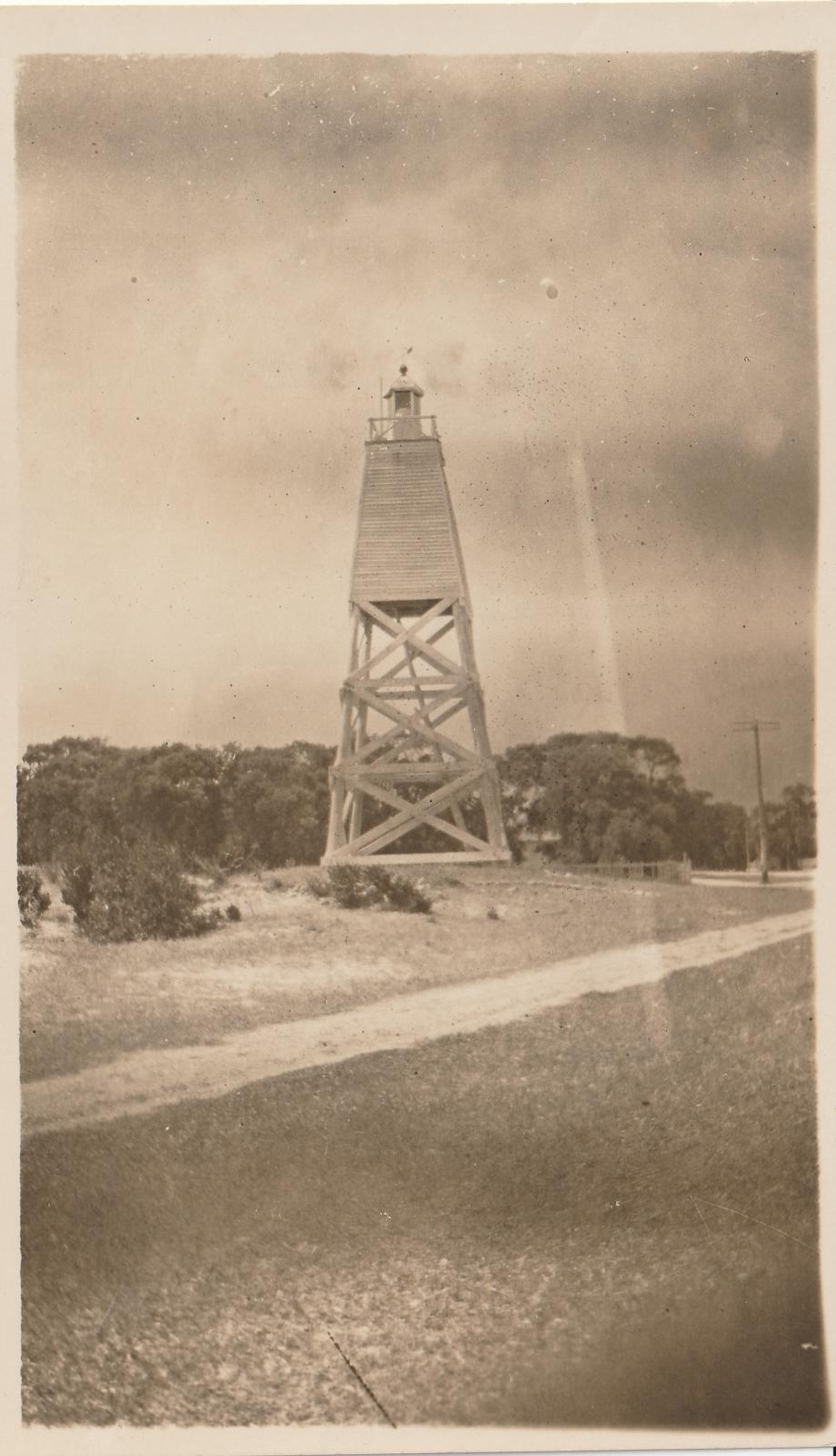
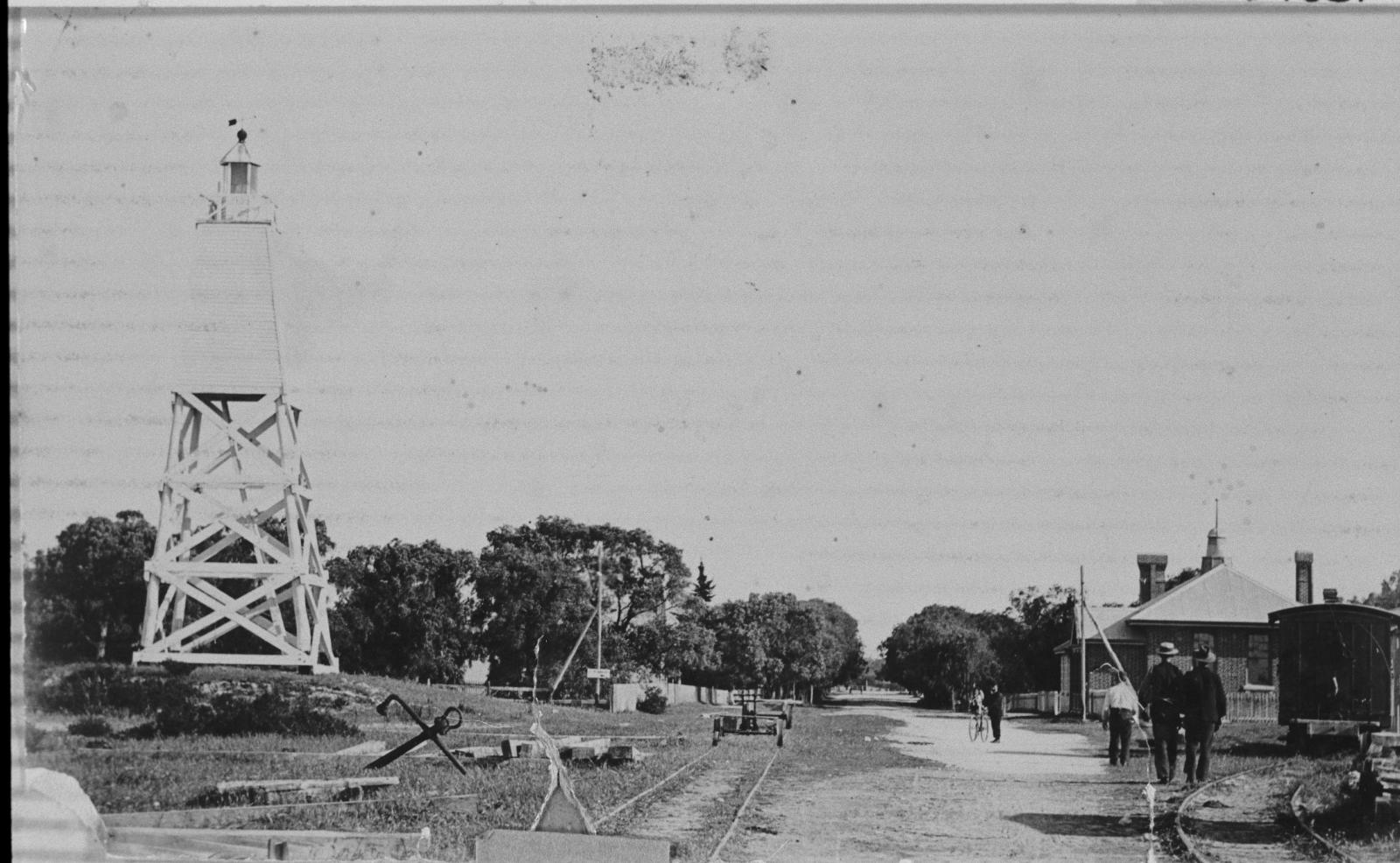
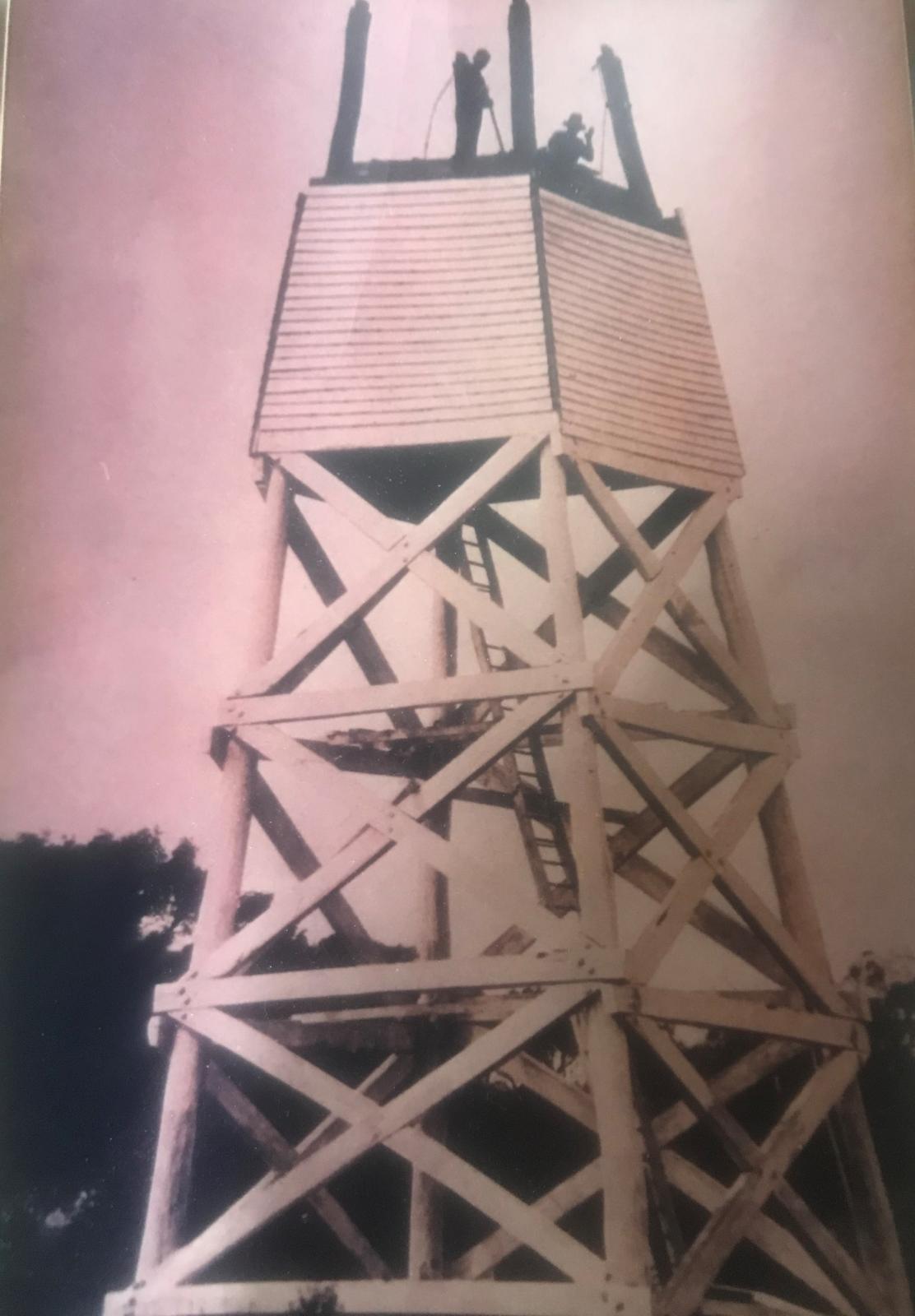
Scan this QR code to open this page on your phone ->

